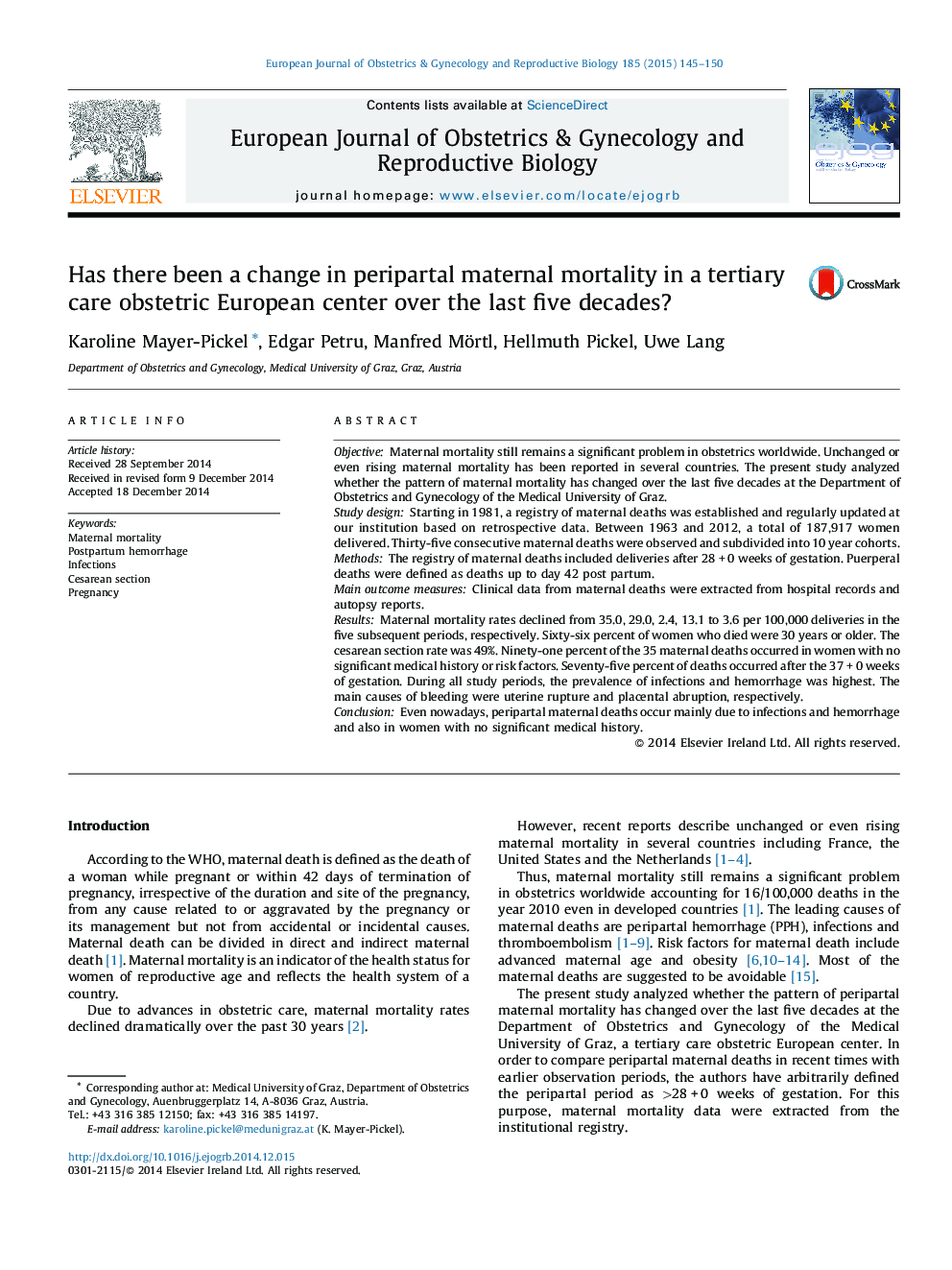| Article ID | Journal | Published Year | Pages | File Type |
|---|---|---|---|---|
| 3919691 | European Journal of Obstetrics & Gynecology and Reproductive Biology | 2015 | 6 Pages |
ObjectiveMaternal mortality still remains a significant problem in obstetrics worldwide. Unchanged or even rising maternal mortality has been reported in several countries. The present study analyzed whether the pattern of maternal mortality has changed over the last five decades at the Department of Obstetrics and Gynecology of the Medical University of Graz.Study designStarting in 1981, a registry of maternal deaths was established and regularly updated at our institution based on retrospective data. Between 1963 and 2012, a total of 187,917 women delivered. Thirty-five consecutive maternal deaths were observed and subdivided into 10 year cohorts.MethodsThe registry of maternal deaths included deliveries after 28 + 0 weeks of gestation. Puerperal deaths were defined as deaths up to day 42 post partum.Main outcome measuresClinical data from maternal deaths were extracted from hospital records and autopsy reports.ResultsMaternal mortality rates declined from 35.0, 29.0, 2.4, 13.1 to 3.6 per 100,000 deliveries in the five subsequent periods, respectively. Sixty-six percent of women who died were 30 years or older. The cesarean section rate was 49%. Ninety-one percent of the 35 maternal deaths occurred in women with no significant medical history or risk factors. Seventy-five percent of deaths occurred after the 37 + 0 weeks of gestation. During all study periods, the prevalence of infections and hemorrhage was highest. The main causes of bleeding were uterine rupture and placental abruption, respectively.ConclusionEven nowadays, peripartal maternal deaths occur mainly due to infections and hemorrhage and also in women with no significant medical history.
